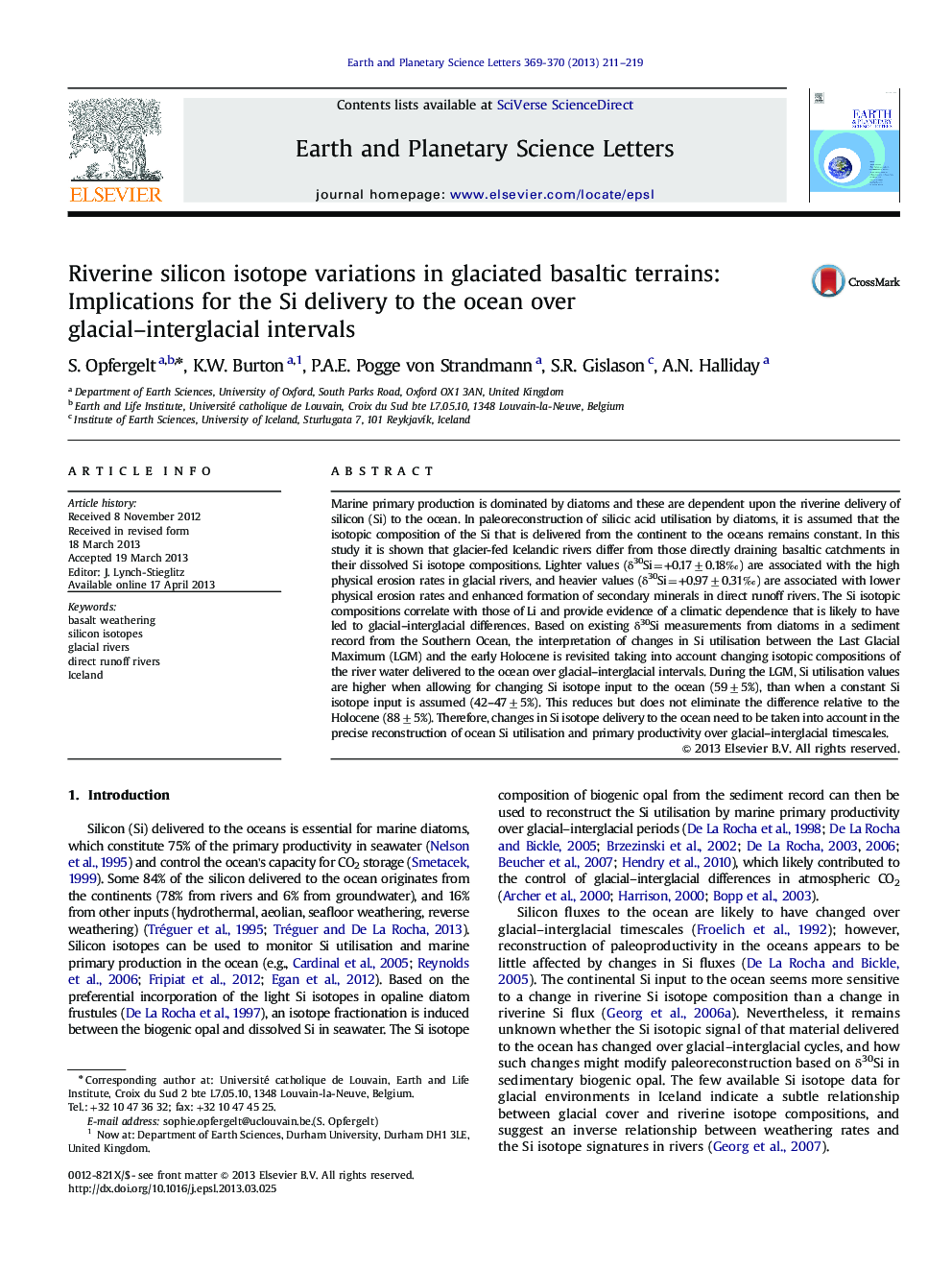| Article ID | Journal | Published Year | Pages | File Type |
|---|---|---|---|---|
| 4677107 | Earth and Planetary Science Letters | 2013 | 9 Pages |
•Lighter δ30Si in glacier-fed rivers associated with high physical erosion rates.•Heavier δ30Si in direct runoff rivers: lower erosion rates and secondary phases formation.•Positive correlation between riverine δ30Si and δ7Li: with negligible biological control.•Changing riverine δ30Si delivery to the ocean over glacial–interglacial intervals.•Impact for paleooceanographic reconstruction of Si utilisation by diatoms.
Marine primary production is dominated by diatoms and these are dependent upon the riverine delivery of silicon (Si) to the ocean. In paleoreconstruction of silicic acid utilisation by diatoms, it is assumed that the isotopic composition of the Si that is delivered from the continent to the oceans remains constant. In this study it is shown that glacier-fed Icelandic rivers differ from those directly draining basaltic catchments in their dissolved Si isotope compositions. Lighter values (δ30Si=+0.17±0.18‰) are associated with the high physical erosion rates in glacial rivers, and heavier values (δ30Si=+0.97±0.31‰) are associated with lower physical erosion rates and enhanced formation of secondary minerals in direct runoff rivers. The Si isotopic compositions correlate with those of Li and provide evidence of a climatic dependence that is likely to have led to glacial–interglacial differences. Based on existing δ30Si measurements from diatoms in a sediment record from the Southern Ocean, the interpretation of changes in Si utilisation between the Last Glacial Maximum (LGM) and the early Holocene is revisited taking into account changing isotopic compositions of the river water delivered to the ocean over glacial–interglacial intervals. During the LGM, Si utilisation values are higher when allowing for changing Si isotope input to the ocean (59±5%), than when a constant Si isotope input is assumed (42–47±5%). This reduces but does not eliminate the difference relative to the Holocene (88±5%). Therefore, changes in Si isotope delivery to the ocean need to be taken into account in the precise reconstruction of ocean Si utilisation and primary productivity over glacial–interglacial timescales.
